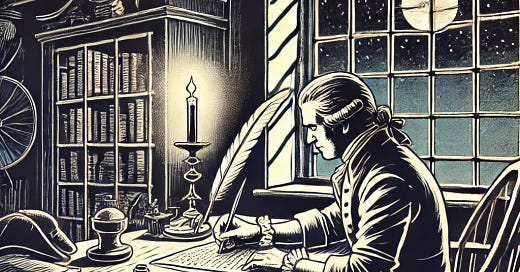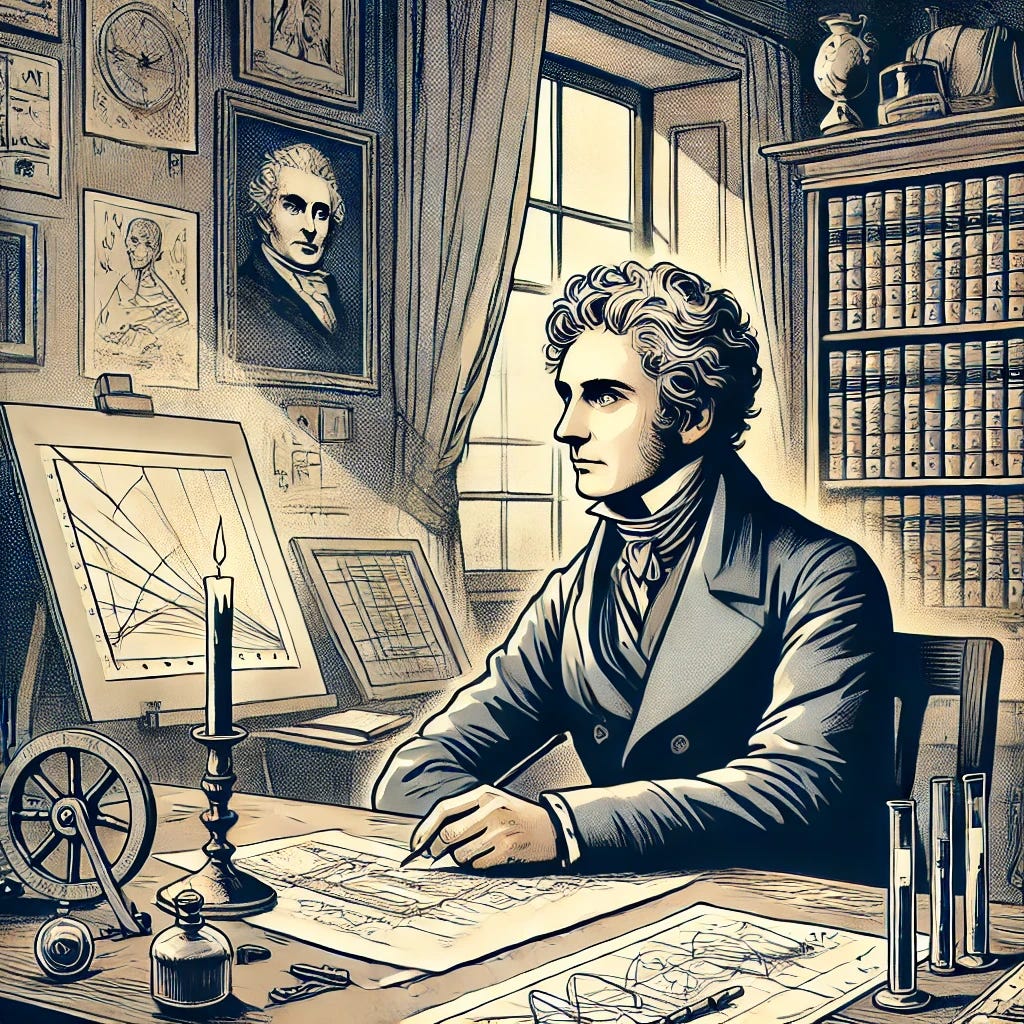In a letter to Henry Cavendish, a philosopher of the time named John Michell wrote about an intriguing idea, something very few people had ever considered. This was just after the American Revolution, and the revolutionary attitudes toppling governments were also toppling ancient scientific ideas.
One of these revolutionary ideas toppling ancient ones was Newton’s theory of gravity, proposed in his 1687 Principia Mathematica, which finally explained that the same force that kept the Moon going around our planet also made things fall to the ground here on Earth. In fact, Newton realized that the Moon itself was falling, but like a cannonball that was shot fast enough at the surface, it was fast enough to keep going in orbit.
Newton also described light in his Principia, although he covered it in much more detail in a book called Optiks. Newton’s take was that light was corpuscular in nature—made up of tiny particles.
Back over to Michell’s letter, and his unbelievably audacious idea. He reasoned that a star could theoretically be so massive, with a correspondingly impressive gravity, so as to keep those corpuscles trapped in its gravitational field forever.
In other words, no light from this star would ever reach us. Michell shrewdly named these theoretical objects dark stars, and the name stuck for centuries. In 1784, the Royal Society published this piece of scientific insight, written by Michell:
"If there should really exist in nature any bodies, whose density is not less than that of the sun, and whose diameters are more than 500 times the diameter of the sun, since their light could not arrive at us; or if there should exist any other bodies of a somewhat smaller size, which are not naturally luminous; of the existence of bodies under either of these circumstances, we could have no information from sight; yet, if any other luminous bodies should happen to revolve about them we might still perhaps from the motions of these revolving bodies infer the existence of the central ones with some degree of probability, as this might afford a clue to some of the apparent irregularities of the revolving bodies, which would not be easily explicable on any other hypothesis; but as the consequences of such a supposition are very obvious, and the consideration of them somewhat beside my present purpose, I shall not prosecute them any further."
Michell is saying not only that there are black holes out there—that’s how we think of dark stars today—but also that we would one day be able to infer their existence by way of other luminous bodies, whose light would reach us and provide us with clues as to the existence of the dark star.
That’s how we find black holes today, incidentally. We look at the wobble of a nearby star, or we see the way other luminous objects behave in the vicinity of a black hole, and that’s how we know they’re out there.
This amazing piece of insight happened 240 years ago, and that’s astounding enough. What’s even more shocking is that someone else had the very same idea at the same time.
Pierre-Simon Laplace was another one of those singularly brilliant minds, around whom other great thinkers congregated. Like with the light orbiting the celestial objects he proposed, these philosophers often could not escape Laplace’s powerful intellectual orbit.
Laplace drew the same conclusions about those corpuscles of light that Michell did, and in 1796, his Exposition du Système du Monde was published. Instead of dark stars, Laplace called them corps obscures, something like hidden bodies.
Both Laplace and Michell understood the idea of escape velocity, even though they never specifically addressed the term. They wrote that without sufficient speed, anything at all would be stuck, even those corpuscles of light… and they turned out to be right.
This seems to be one of those “you can’t make this stuff up” level coincidences, and while it might seem odd that two minds would conclude something shocking about the universe around the same time, it makes a great deal more sense if you step back for a moment.
Consider how both Laplace and Michell needed to have a good understanding of the principles Newton outlined in Principia and Opitks. There needed to be time for rigorous analysis, and for other thinkers to weigh in and then teach them these ideas. There needed to be some additional astronomical observations, too, and better telescopes allowed this to happen.
Newton himself stood on the shoulders of giants, and so did Laplace and Michell. Science is cumulative, and ideas often come about in two (or more) places at once. It’s almost inevitable, given how connected the world has become over time.
Black holes are super fun to think about, and we’ve only scratched the surface of these dark stars today, but I hope that this ignites your imagination for a few minutes. Can you think of any other discoveries that have happened around the same time, in more than one location?






You forgot to mention the main part: Newton developed his theory of gravity after the Moon fell on his head.
I might be misremembering a few details though, so don't hold me to it.
Nice! Hadn't heard some of these tidbits before. Newton RULZ!